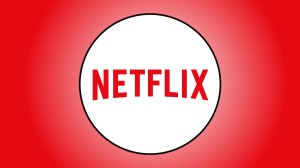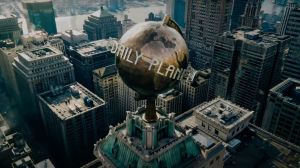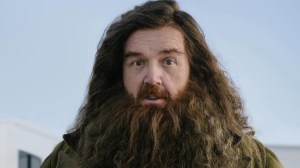Star Trek: Prodigy returned from hiatus today with its sixth episode, “Kobayashi.” As the title suggests, the episode digs into Star Trek history by pitting the Protostar‘s self-proclaimed captain, Dal, against the unwinnable Kobayashi Maru training scenario. The scene became an opportunity to honor past Star Trek stars. Spock, Odo, and Mr. Scott appear (in holographic form) voiced by their original actors (the late Leonard Nimoy, René Auberjonois, and James Doohan, respectively) via archival audio. As a result, the episode feels like a celebration of 55 years of Star Trek, introducing Star Trek: Prodigy‘s younger viewers to Star Trek’s legacy, perhaps for the first time.
Videos by ComicBook.com
Star Trek: Prodigy producer Aaron J. Waltke wrote the episode. ComicBook.com spoke to Waltke over the phone about how the story came together, including navigating Auberjonois’s unfortunate death after writing Odo into the script and what it was like building an episode around previously recorded audio. Here’s what he had to say:

How did the idea for this episode come about? Did it start with you wanting to do something that honors all these Star Trek greats, or was there another narrative purpose and grew into this opportunity to do this tribute?
Aaron J. Waltke: Well, it was probably a little bit closer to the latter in that when we were planning out the season, there were a lot of things we wanted to try to service. And very early on, we realized that in terms of Dal’s character arc as from, on Maslow’s hierarchy of needs, someone who didn’t have much in the way of a good upbringing or shelter and whatnot, and he’s a little braggadocious and impulsive and maybe a little selfish at times, in terms of him finally getting the talking to or the wake-up call, we realized, why can’t we have that happen in the same way that I think other braggadocious and impulsive and perhaps slightly arrogant captains have had a similar wake-up call? But unlike maybe Captain Kirk, who still found a way to cheat and preserve his ego, Dal instead actually learns the right lesson from it.
And so that was something we realized very early on, that we wanted to use the Kobayashi Maru scenario as a functioning metaphor for how our characters, but in this particular scenario, Dal, how they react to a hopeless situation, but specifically, Dal hanging onto this idea that he has to be in control in order to be a good captain. Not only a good captain but a good leader or a good crewmate to his friends. Because I think Dal is so not used to being in a family, a found family or whatnot, that it’s uncomfortable for him, and so he tends to act out a little bit. In our minds, the Kobayashi Maru was the perfect chance for Dal to finally just brass tacks, all the cards on the table, here’s a computer simulation telling you that you aren’t what you want to think you are as a captain.
There was also some humor involved too, because we were like, “Well, what if he goes into the Kobayashi route not knowing it’s a no-win situation?” As someone who grew up in the age of gaming, there is something quite fun for somebody who first plays something like a roguelike or something, where there’s actually not a way to win. All you can do is just survive for as long as you can, like Dark Souls or something. And if he goes in not realizing that there’s no way to win it, we thought there could be a lot of humor there.
But on top of that, as we were talking it out like, “Well, let’s look at the original Kobayashi Maru,” and we realized how interesting is it that in Wrath of Khan, for instance, it’s not just random cadets or whatever that are on the bridge. Saavik, she’s commanding the Enterprise, and she has on the bridge with her Spock and Uhura and Sulu, and it’s this all-star cast. And we’re like, “Well, what would that look like in a computer simulation on the holodeck? Fast forward 100+ years, how would they have maybe updated that?” And we realized, my god, we’ve seen it in every other Star Trek show where they can just say, “Bring up a simulation of Leonardo DaVinci,” and he would just appear.
We realized that we could tap into something that I think every Star Trek fan growing up had, that ultimate wish fulfillment and game of argumentation of what makes the perfect bridge crew. We realized very early on that it’s a fool’s errand to try to say, “Okay, this character is the best and that character’s the best.” If I had my druthers, I would probably have 30 people on that bridge. And we tried very early on to say, “No, no. But really, what’s the best bridge crew?” But it was impossible. We couldn’t choose because there are so many great characters in the 55-plus years that Star Trek’s been on the air.
Ultimately, we wound up going with something that was a little bit more of a random generator of just like, “Okay, here’s a selection of the best,” and then just choosing a few characters that I think are the epitome of Star Trek. Then over time, while having fun and embracing the adventure of it and whatnot, and the legacy, it also was a chance to honor a lot of those characters as well. This episode was written back in 2019, I think mid-2019, and then we were in production when, for instance, we had already written the part for René Auberjonois when he passed away.
Something unfortunately similar happened when the Hagemans and I were on Trollhunters. Ultimately, we decided if there’s a way we can make this work, we want to honor the legacy of these characters, and it became a great platform, I think, in our minds of a chance for these new characters that are entering the Trek world to remember that they’re standing on the shoulders of giants. That was our thinking, that animation is such a unique medium. It was a chance for us to hear the words from Leonard Nimoy himself, that I think maybe some of these kids who are watching never would’ve heard, the phrase, “The needs of the many outweigh the needs of the few,” and have it be impactful in a character’s journey. That was our thinking. There were a lot of moving parts that snapped together in a way that felt right.
So you had written in Odo before René Auberjonois died? Because watching the episode, I assumed the characters were chosen because they had died. Nichelle Nichols is still alive, but there’s been a lot of stuff honoring her in the past year or so, with the documentary, for example. I assumed Beverly Crusher was there because you needed someone to deliver lines that weren’t prerecorded. But you had actually chosen Odo before that?
Yeah, when we first were starting to write it, we were like, “Let’s honor some of these characters that maybe are no longer with us, but also mix in some others.” And then, over time, it just so happened to be that we lost René, and at that point, we were like, “Well, we have to try to make it work.” Because Odo has always been one of my favorite characters across all of Star Trek, period, and I hope that I did his character justice in that he always was this figure that was both playful and snarky, but also could get the job done, and, I would argue, was one of the greatest security officers that ever worked with Starfleet, even if he never formally joined them.
It was something that we wanted to honor. But as soon as we tapped into this idea that we were going to be bringing past characters back, it did make sense for us to see if we could really find a way to honor these legacy characters in the best way that we could.
I know this question is a little pedantic and not really the point of the thing, but I know some of the continuity-minded fans are going to wonder: did you come up with a reasoning for why Odo is in the databanks and chosen for the simulation, even though he wasn’t technically in Starfleet?
Well, as I mentioned earlier, there’s plenty of characters that are in Starfleet or in the holodeck data banks that weren’t formally in Starfleet, but still could be generated. But as far as people that could serve on your bridge, Odo did serve on Starfleet bridges. There are numerous episodes where he was flying on the Defiant in the Dominion War alongside them, operating tactical and stuff. And you could argue that Odo single-handedly ended the Dominion War using his security tactics and his diplomatic skills, I guess, as the branch between the Changelings and the solids.
So to say that you couldn’t build a bridge crew out of characters that served for the Bajoran Militia or served on Starfleet stations, it didn’t quite make sense to us because there are so many instances in Star Trek where you have characters that aren’t in Starfleet, but then come and serve alongside them anyway. So it made sense to us. He’s one of the heroes of the Dominion War and saved Starfleet and served on Starfleet bridge crews. Why wouldn’t he be an option in this simulation?
Was it particularly challenging writing this scene and around prerecorded lines from past audio? I imagine it required a whole lot of research.
Yeah, it was extremely challenging, is the short answer. We had the Star Trek archives, which obviously have the audio from the last half-century of Star Trek shows and movies. But ultimately, it did come down to how were the lines delivered? Were they the right intonation? Was the audio clean enough? Could it be cleaned up? Ultimately, what it came down to is I had all of the scripts, and I wound up creating a computer algorithm. I used a lot of Boolean searches, searching the scripts to see if I could find the right lines to fill in the blanks. Because there were a few key ones like, “In your own way, you are as stubborn as another Captain of the Enterprise I once knew.” I knew I wanted to use that.
But there are other lines that were just sort of like, “We have Klingons bearing down on us at mark 1.4, mark 10” or whatever, that I was like, “Okay, we have to find one that sounds good from this character.” So it really came down to a lot of leg work and grunt work where I think I probably watched around 45 episodes top to bottom and read about 90 Star Trek scripts top to bottom to find the perfect lines. And sometimes I would find a line, and then I would track it down in the episode, and it wouldn’t sound right, or it would be the wrong delivery, so then I would have to take that out and plug it back in. It was quite an endeavor, to say the least.
But ultimately, years and years ago, I used to work as a documentary filmmaker, and it was kind of interesting because you get used to working with sound bites, and sometimes you have a perfect sound bite, and you want it to be answered by another talking head giving a different sound bite that sounds like they’re having a conversation. So in a way, my brain reverted back to that, and I was using these basic storytelling units of, “Okay, here’s a bunch of great lines from Odo that kind of sound like he’s upset, and here’s some great lines from Uhura where she is alerting people to go to battle stations.” And then it was a lot of shuffling around, but also catering a few specific lines to make it seem like they were really in the room talking to each other. It was a lot of finagling, but I think we finally got to a place where it works.
The first few episodes Star Trek: Prodigy felt like it was about getting these characters together and having them get to know each other. It seems like with the Protostar revealing what it can do, and that tease at the end of this episode, we’re jumping into a deeper part of the pool. What can you say about how this next batch of episodes compares to that first batch?
Well, I think the first five were very much you could take them as a unit, which is this is the baseline of assembling the crew, and now they are all working together on this derelict starship and venturing into the unknown. So I think the back half is okay, but now where are we heading to? What is their north star that they can point to and sail straight on until morning? I think, as you hear in this episode and future ones, that north star is in fact Starfleet and the Federation, and the hope and ideals that maybe it represents aren’t just something that they fake until they make it, but maybe something that they themselves can live by. That’s, I think, is where the back half of this 10-episode arc is going. “Now that we have our freedom, where are we headed next?” And I think the answer is into, hopefully, a better future for everyone.
What do you think? Let us know in the comments. Star Trek: Prodigy streams new episodes weekly on Thursdays on Paramount+.








